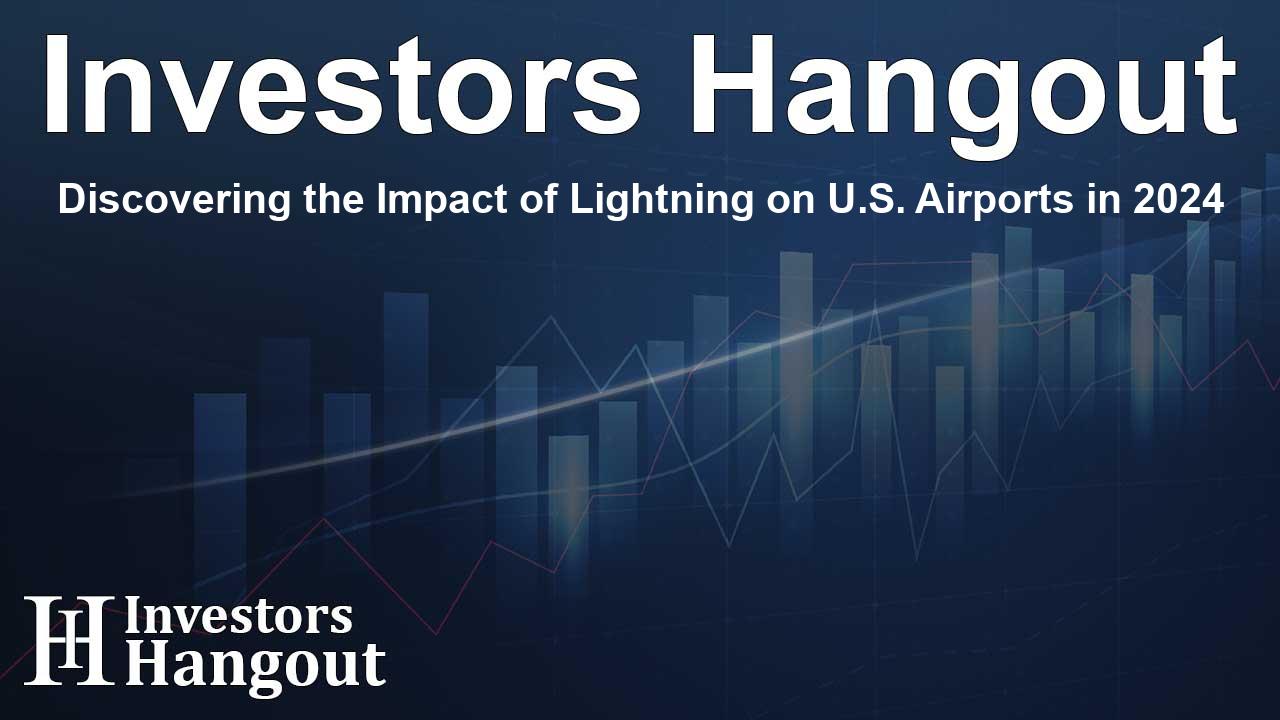Discovering the Impact of Lightning on U.S. Airports in 2024

Understanding Lightning's Effect on U.S. Air Travel
The Vaisala Xweather Annual Lightning Report for 2024 has unveiled significant insights into lightning activity across the United States, particularly in relation to air travel. Research indicates that well-known airports such as Orlando, Dallas-Fort Worth, and Atlanta International are facing increasing challenges due to frequent thunderstorms. Teague, Texas, has been highlighted as the lightning capital of the country, witnessing an astonishing rate of 1,903 lightning strikes per square mile in 2024.
Key Findings of the Lightning Report
This year's report reveals that the entire U.S. experienced a staggering total of 209,484,916 lightning events, which encompasses both in-cloud and cloud-to-ground activity. A notable peak occurred on May 22, when thunderstorms produced over 3 million lightning strikes, leading to severe weather conditions impacting many states in the central and eastern regions.
The Cost of Severe Weather
Severe weather continues to be a significant concern, with the National Oceanic and Atmospheric Administration (NOAA) reporting 24 weather disasters that exceeded $1 billion in damage within the United States. Among these, 17 incidents were categorized as severe storm outbreaks, raising the stakes for airport operations and the safety of travelers during these events.
Spotlight on Lightning Activity at Airports
Miami International Airport has emerged as the most vulnerable airport in the U.S. to lightning-related delays, averaging 115 warning hours each year due to detected lightning activity. Close competitors include Orlando International and Dallas Fort Worth International Airports, with warning hours of approximately 109 and 64, respectively. Ground stops and safety protocols are instituted whenever lightning is detected within five miles, affecting air travel schedules.
Outdoor Activities and Lightning Safety
Lightning poses a grave risk not only to air travel but also to many outdoor activities. According to experts, having awareness of local weather conditions can significantly mitigate risks. Texas remains a hotspot for lightning activity, emphasizing the importance of being informed about potential storms, especially during the warmer months when the weather is more volatile.
Wind Farms and Lightning Attraction
Interestingly, wind farms have been identified as both attracting and initiating lightning. Turbines, due to their height and structure, may engage in upward lightning, creating scenarios in which they trigger lightning strikes even in the absence of nearby storms. A specific wind farm in Pushmataha County, Oklahoma, has experienced an average of 10 lightning strokes per turbine per year, exemplifying the interplay between renewable energy initiatives and weather phenomena.
Strategies for Reducing Travel Delays
Travelers are encouraged to be strategic in their flight choices according to seasonal weather patterns. Airports in regions like Florida, Alabama, and Louisiana typically experience higher lightning activity during summer months, while Texas sees increased thunderstorm occurrences in spring. Understanding these patterns can provide travelers with the ability to anticipate delays and choose alternative routes if necessary.
Conclusion: The Role of Technology in Lightning Monitoring
The 2024 Annual Lightning Report significantly relies on Vaisala's robust National Lightning Detection Network (NLDN), which has been operational for over four decades, ensuring high accuracy in lightning detection. With more than 10 million flights annually in the U.S., the ability to monitor and respond to lightning events is crucial for maintaining travel efficiency.
Frequently Asked Questions
What are the main findings of the 2024 Vaisala Lightning Report?
The report indicates that there were over 209 million lightning events across the U.S. in 2024, with Texas being the leading state for lightning activity.
Which U.S. airport is most affected by lightning delays?
Miami International Airport experiences the highest risk of delays due to lightning, averaging 115 hours of lightning warnings annually.
How does lightning impact air travel?
Lightning causes flight delays when detected near airports; ground operations are paused for safety, leading to scheduling disruptions.
Are wind farms associated with lightning activity?
Yes, wind farms can attract lightning and even trigger strikes due to their height and structure, creating unique safety considerations.
How can travelers mitigate lightning-related delays?
Being informed about weather patterns and choosing flights during low-risk periods can help travelers avoid potential delays due to thunderstorms.
About Investors Hangout
Investors Hangout is a leading online stock forum for financial discussion and learning, offering a wide range of free tools and resources. It draws in traders of all levels, who exchange market knowledge, investigate trading tactics, and keep an eye on industry developments in real time. Featuring financial articles, stock message boards, quotes, charts, company profiles, and live news updates. Through cooperative learning and a wealth of informational resources, it helps users from novices creating their first portfolios to experts honing their techniques. Join Investors Hangout today: https://investorshangout.com/
Disclaimer: The content of this article is solely for general informational purposes only; it does not represent legal, financial, or investment advice. Investors Hangout does not offer financial advice; the author is not a licensed financial advisor. Consult a qualified advisor before making any financial or investment decisions based on this article. The author's interpretation of publicly available data shapes the opinions presented here; as a result, they should not be taken as advice to purchase, sell, or hold any securities mentioned or any other investments. The author does not guarantee the accuracy, completeness, or timeliness of any material, providing it "as is." Information and market conditions may change; past performance is not indicative of future outcomes. If any of the material offered here is inaccurate, please contact us for corrections.